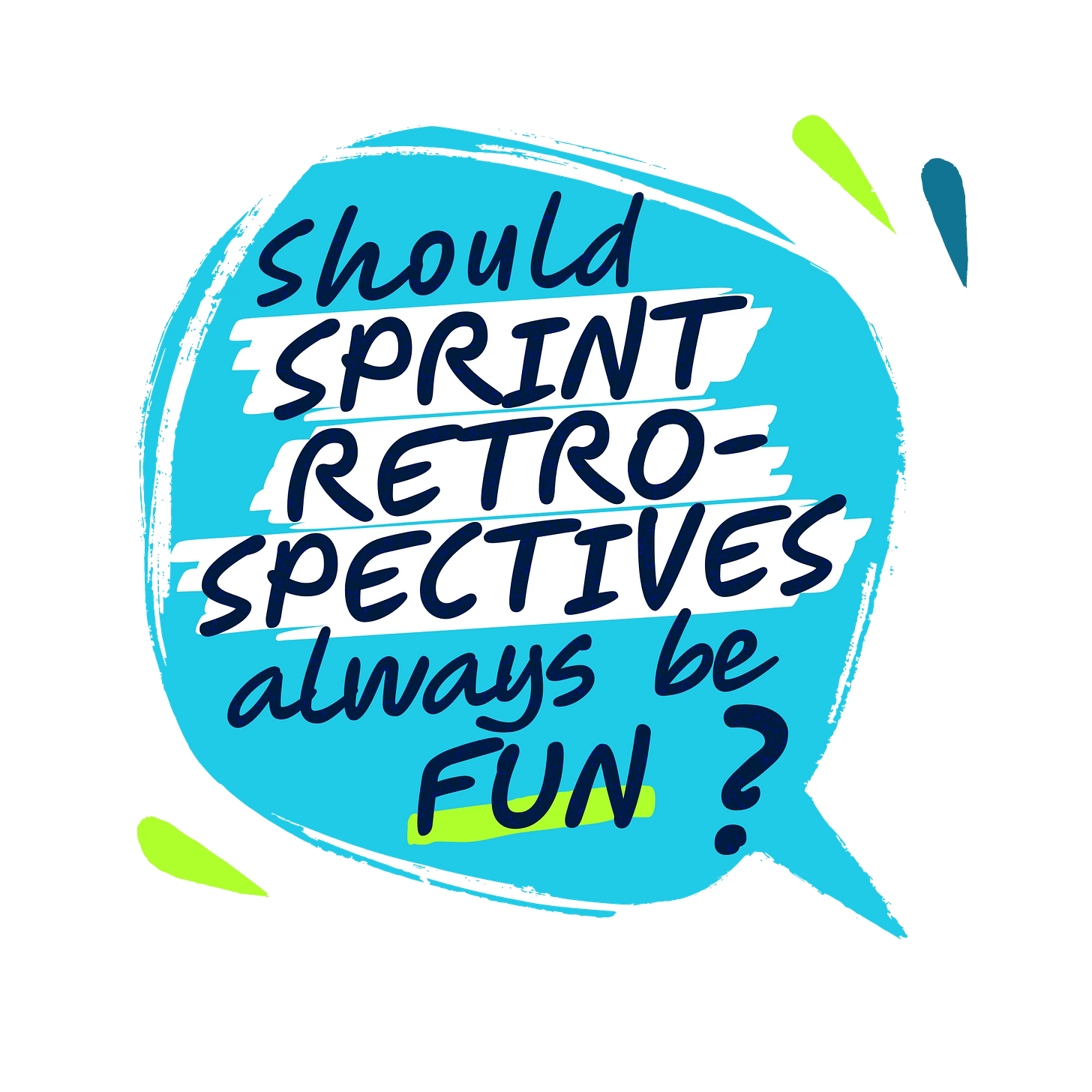Should Sprint Retrospectives Always Be Fun?
The primary purpose of Sprint Retrospective is to foster a space for honest reflection and constructive feedback, where ideas that can increase the quality and effectiveness of work can emerge.
Sprint Retrospectives are vital to improving team dynamics and product outcomes. While making them fun can boost engagement, it is not necessary in most cases. Balancing fun and effective communication ensures the team remains motivated and focused on continuous improvement.
While the event should have positive outcomes, fun retrospectives can sometimes hide their ineffectiveness. The intended purpose of a Sprint Retrospective is to improve quality and effectiveness. If that’s not achieved or the action points proposed in the Sprint Retrospective don’t happen, the team may perceive this event as useless.
We shouldn’t let the format give a false sense of success. Instead of trying to replace the true meaning of the event with fun activities or themes, the scrum master should look at the underlying factors for team disengagement and fix them.
If the Sprint Retrospectives achieves its purpose, it can be facilitated in any positive way and can use metaphors, themes, or facilitation techniques. Here are some things to consider:
1. Engagement Through Enjoyment:
Incorporating fun elements into Sprint Retrospectives can keep team members engaged and eager to participate. Games, icebreakers, and creative activities can make the session lively, encouraging everyone to contribute. However, it's crucial to ensure that these elements support the retrospective's goals and don't distract from meaningful discussion.
2. Creating a Safe Environment:
Whether fun or serious, retrospectives must create a safe space where team members feel comfortable sharing their thoughts. Fun activities can help build trust and camaraderie, but the focus should remain on fostering open communication. Ensuring that everyone feels heard and respected is vital to effective retrospectives.
3. Balancing Fun and Focus:
While fun can enhance engagement, it shouldn't overshadow the retrospective's purpose. It's essential to strike a balance between enjoyable activities and focused discussions. Too much fun might lead to a lack of seriousness, while too little might make the session tedious. Finding the right balance helps maintain productivity and motivation.
4. Tailoring to Team Preferences:
Different teams have different dynamics, and what works for one may not work for another. Some teams thrive on playful activities, while others prefer straightforward discussions. Understanding the team's preferences and adjusting the retrospective format can make the sessions more effective.
5. Addressing Sensitive Topics:
Not all retrospectives are suited for fun activities, especially when addressing sensitive or challenging issues. In such cases, a more serious approach might be necessary to ensure the team can effectively discuss and resolve the matter. Gauging the team's mood and choosing the appropriate tone for each session is essential.
6. Continuous Improvement:
The goal of Sprint Retrospectives is to drive continuous improvement. While fun can be a tool to facilitate this, it's not the end goal. Ensuring that each retrospective leads to actionable insights and tangible improvements is more important than the method used to achieve it. Keeping the focus on improvement helps maintain the value of these sessions.
Sprint Retrospectives should always be engaging and effective. By understanding the team's needs and dynamics, it's possible to create enjoyable and productive retrospectives.
The key is to foster an environment where honest feedback and continuous improvement are prioritised, regardless of the session's tone.



